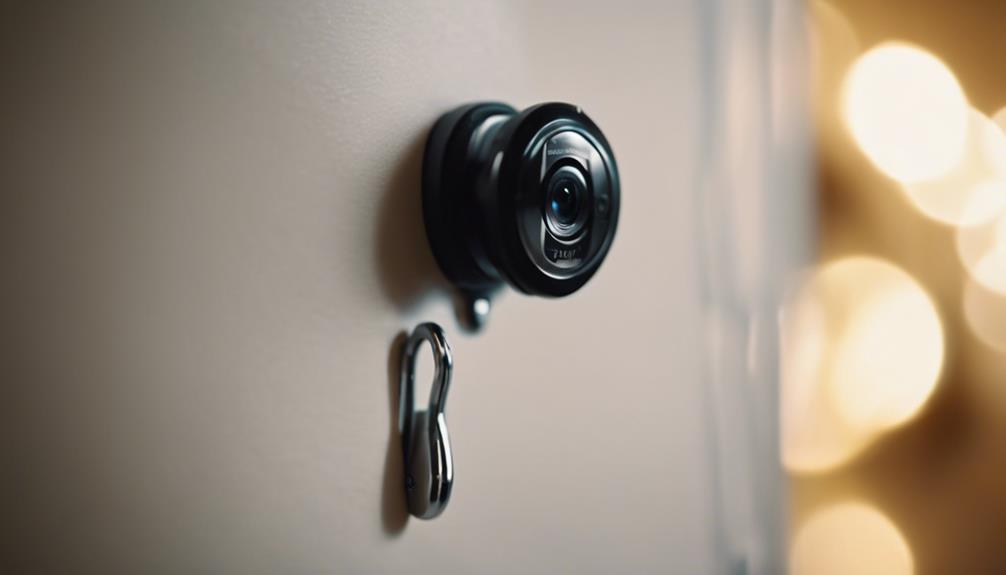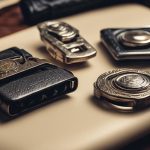To identify spy cameras in changing rooms, conduct a visual inspection by scanning the area thoroughly. Check common hiding spots like vents, smoke detectors, or corners. Look for unusual objects that seem out of place. Use a flashlight to search for hidden devices. Detect wireless signals using your electronic devices. Utilize a camera detector for advanced detection. Watch for red lights that might indicate recording. Be aware of mirrors that could hide cameras. Continuously monitor your surroundings for any suspicious activity. Awareness and alertness are key.
Visual Inspection
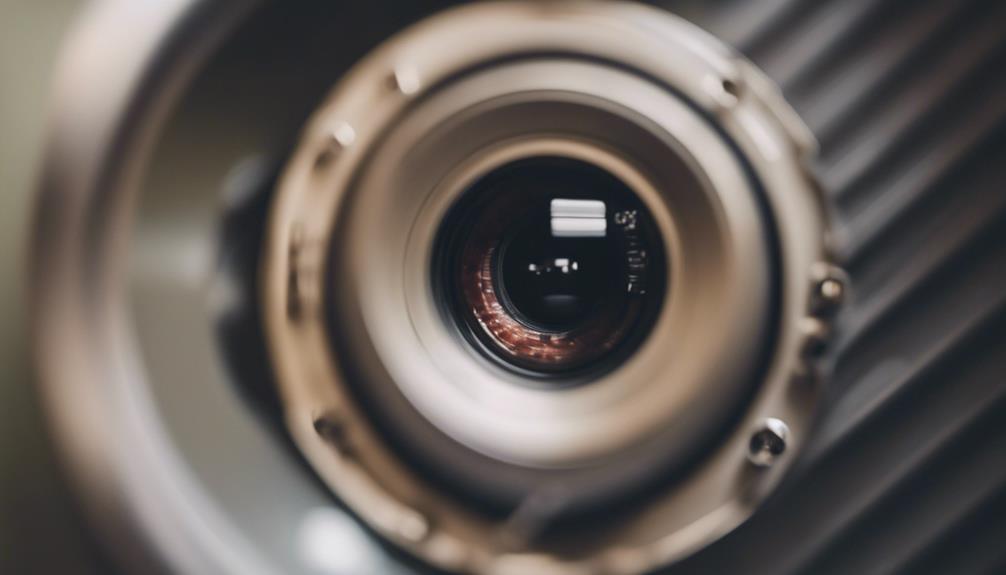
To identify spy cameras in changing rooms, carefully examine the surroundings for any suspicious objects or devices that don't belong. When conducting a visual inspection for privacy protection, pay close attention to potential hidden cameras.
Start by scanning the room methodically, focusing on common areas where cameras might be discreetly placed, such as corners, ceilings, or behind objects.
Look for any unusual wires or cables that seem out of place. Hidden cameras often require power sources or connections to transmit data, so these may be visible upon close inspection. Additionally, keep an eye out for small lenses that could resemble camera components. Some hidden cameras are designed to be as inconspicuous as possible, blending into the environment.
Remember to check for reflective surfaces that could potentially conceal a camera lens. Mirrors, decorations, or even ventilation grilles might be used to hide cameras.
Check Common Hiding Spots
Examine potential hiding spots meticulously to uncover any hidden spy cameras in changing rooms. Hidden cameras raise serious privacy concerns, making it important to be vigilant. Common areas where these cameras might be concealed include air vents, smoke detectors, wall decorations, electrical outlets, or even behind mirrors. It's vital to check these spots carefully as perpetrators often aim to place cameras where they can capture compromising footage without being detected.
In many jurisdictions, the use of hidden cameras in changing rooms is illegal due to the severe invasion of privacy it entails. Beyond the legal implications, the presence of spy cameras can have lasting psychological effects on victims.
To combat this issue, establishments must implement stringent security measures such as regular sweeps for hidden cameras, training staff to be observant, and installing physical barriers to prevent unauthorized access to changing areas.
Look for Unusual Objects
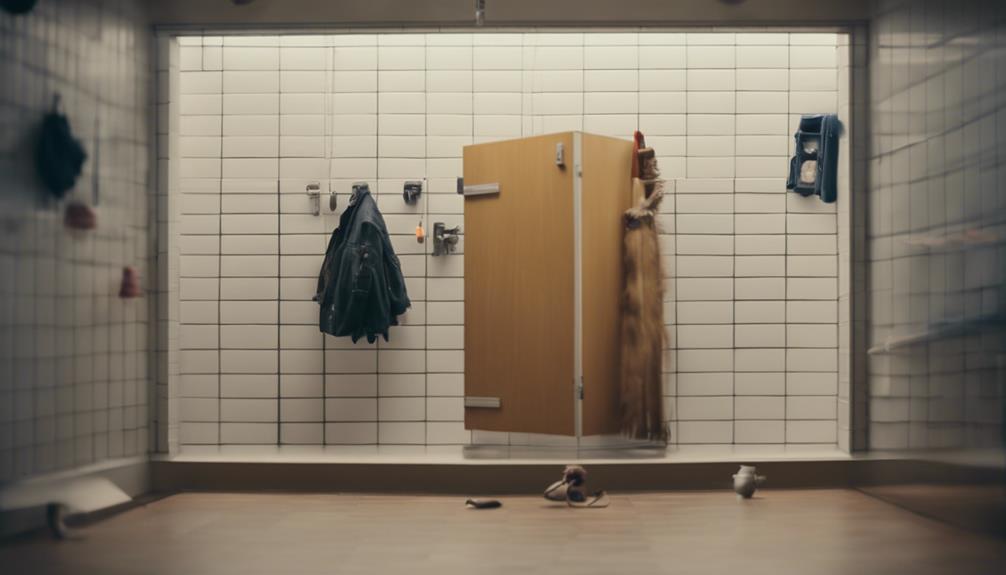
Search for any unusual objects that don't seem to belong in the changing room, as these could potentially be hidden cameras cleverly disguised to avoid detection. Keep an eye out for items like small holes in walls or ceilings, smoke detectors with unusual blinking lights, or even misplaced decorations.
Hidden cameras are often designed to blend in seamlessly with the environment, making them difficult to spot at first glance. These covert devices are used for privacy invasion and can capture compromising footage without your consent.
Be wary of objects that seem out of place or are positioned in a way that obstructs your view. Check for any strange wires or electronic devices that don't serve an apparent purpose in a changing room setting.
Use a Flashlight
Illuminate your surroundings with a flashlight to thoroughly inspect dark corners and hidden spaces for potential spy cameras in changing rooms. When using a flashlight, make sure you shine the light at different angles to reveal any reflective surfaces that might indicate the presence of a camera lens.
Start by examining the ceiling corners, air vents, and any decorative items that could be used to conceal a camera. Move methodically around the room, paying close attention to areas where a camera could be discreetly placed.
Check behind mirrors, inside cabinets, and even underneath benches or shelves. Spy cameras can be incredibly small and well-hidden, so be meticulous in your search. Look for any wires that don't seem to belong or any unusual blinking lights.
Detect Wireless Signals
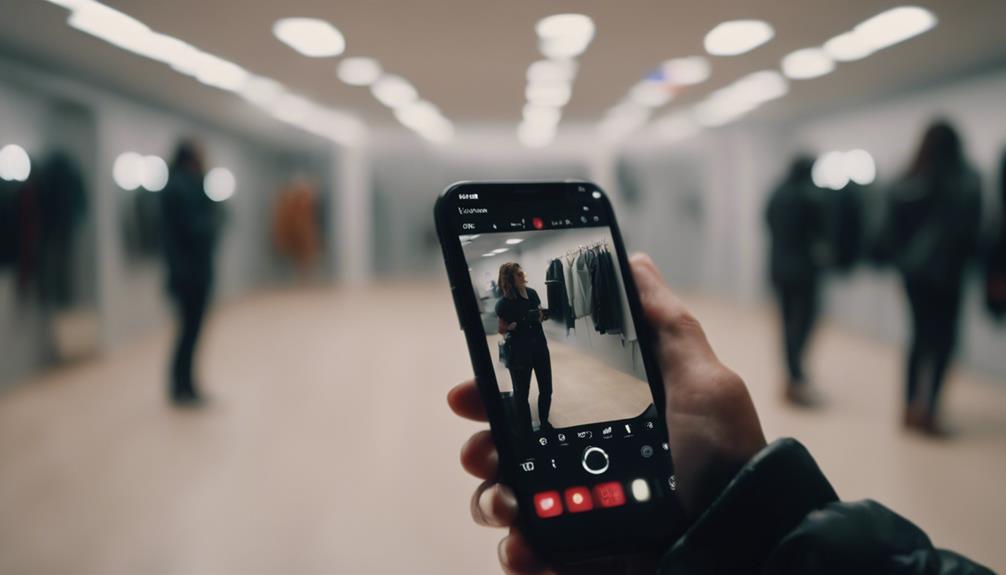
To identify potential spy cameras in changing rooms, consider detecting wireless signals as an additional precautionary measure. Spy cameras often transmit data wirelessly to external sources, which can be intercepted if you're vigilant.
Signal interference can occur when a hidden camera is actively transmitting, causing disruptions in nearby wireless frequencies. To detect these signals, you can use a portable RF signal detector. These devices can help you scan for any suspicious frequencies that may indicate the presence of a wireless transmission from a hidden camera.
Privacy concerns are paramount when it comes to changing rooms, making it essential to take steps to protect yourself from potential violations. By being proactive in detecting wireless signals, you can add an extra layer of security to your privacy measures.
Keep in mind that while detecting wireless signals is a valuable tool, it should be coupled with other detection methods for thorough surveillance detection in changing rooms.
Utilize a Camera Detector
Consider enhancing your surveillance measures by utilizing a camera detector to further safeguard changing room privacy and detect potential spy cameras. Camera detectors are portable devices equipped with technology to identify hidden cameras by detecting their radio frequency emissions or lenses.
When using a camera detector, carefully scan the changing room area, focusing on common areas where spy cameras may be concealed, such as air vents, smoke detectors, or wall decorations.
By incorporating a camera detector into your security protocol, you can proactively address privacy concerns and mitigate the risk of unauthorized surveillance. It's essential to be aware of the legal implications surrounding the use of camera detectors in different jurisdictions.
While protecting privacy is vital, make sure that your surveillance efforts comply with relevant laws and regulations to avoid any potential legal consequences.
Prioritize the protection of individuals' privacy in changing rooms by regularly employing a camera detector as part of your security measures. Stay informed about privacy laws and regulations to maintain ethical surveillance practices and safeguard against hidden spy cameras.
Watch for Red Lights
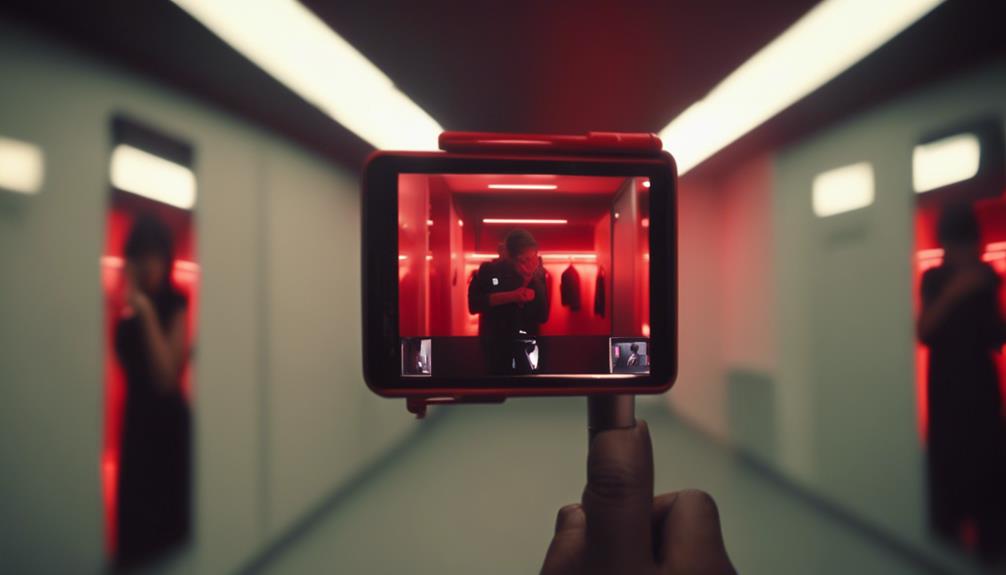
When examining changing rooms for potential spy cameras, be vigilant and watch for red lights, which are often indicators of camera activity.
Check for hidden cameras by scanning the room for any small, discreet devices that may be hidden in corners, behind objects, or in crevices. Red lights on these cameras can sometimes give away their presence, as many cameras have small LED lights that illuminate when recording. These lights may be located near the lens of the camera or in inconspicuous areas.
Be vigilant in your search for red lights, as spy cameras are designed to be discreet and blend into the environment. Pay close attention to any suspicious objects or areas that may be concealing a camera.
If you notice a red light, it's essential to immediately leave the changing room and inform the authorities.
Be Aware of Mirrors
Keep in mind that mirrors in changing rooms can sometimes be used to conceal spy cameras, making it important to inspect them closely for any signs of tampering or unusual reflections.
When entering a changing room, take a moment to scan the mirrors for any irregularities. Start by checking for reflections that seem out of place or don't align with your movements. Spy cameras hidden behind mirrors may cause distortions or inconsistencies in the reflections they produce.
To avoid blind spots, stand at various angles in front of the mirror and observe if there are any unexpected reflections, especially in areas where a camera could be hidden. Look for tiny holes or gaps around the edges of the mirror that could indicate a camera's presence.
Additionally, pay attention to any objects or decorations placed near the mirror that could potentially be concealing a camera. By staying vigilant and thorough in your examination of mirrors, you can better protect your privacy in changing rooms.
Monitor Your Surroundings
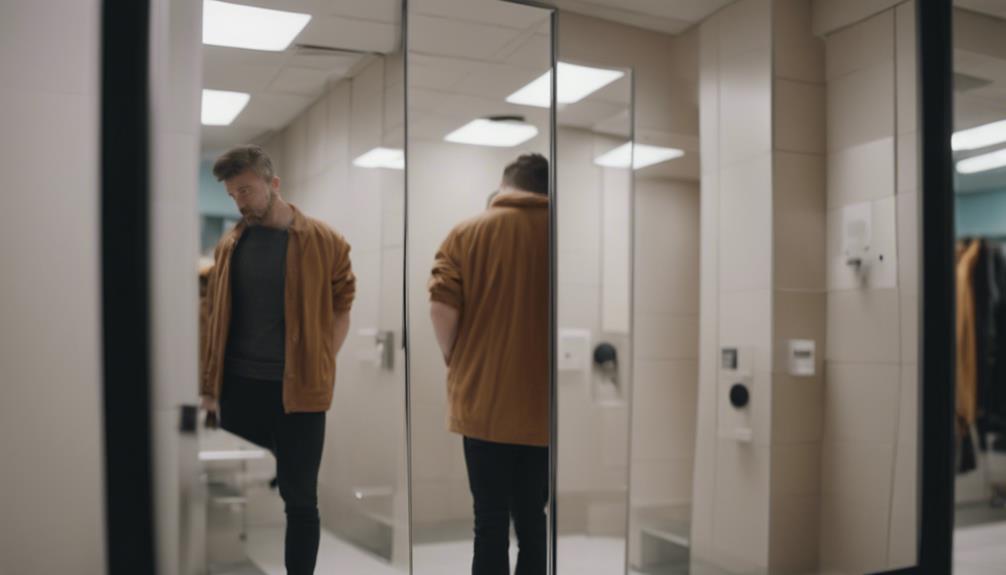
Survey the area around you diligently to make sure there are no hidden spy cameras in the changing room. When monitoring your surroundings for potential spy cameras, it's important to employ awareness tactics to protect your personal safety and privacy.
Begin by examining any suspicious objects or unusual items in the room. Spy cameras can be cleverly disguised as everyday objects like smoke detectors, outlets, or even clothing hooks. Confirm that these items are legitimate and not concealing any hidden cameras.
Furthermore, consider security measures such as checking for small holes or gaps in walls, ceilings, or other fixtures where a camera could be hidden. Pay attention to any unusual blinking lights or noises that could indicate a recording device is present.
Additionally, be cautious of mirrors that have a two-way glass effect, which could be used to conceal a camera behind them.
Conclusion
By following these steps, you can become more vigilant in identifying spy cameras in changing rooms.
Remember to visually inspect the area, check common hiding spots, look for unusual objects, use a flashlight, detect wireless signals, utilize a camera detector, watch for red lights, be aware of mirrors, and monitor your surroundings.
Stay informed and proactive to guarantee your privacy and safety in public spaces.
